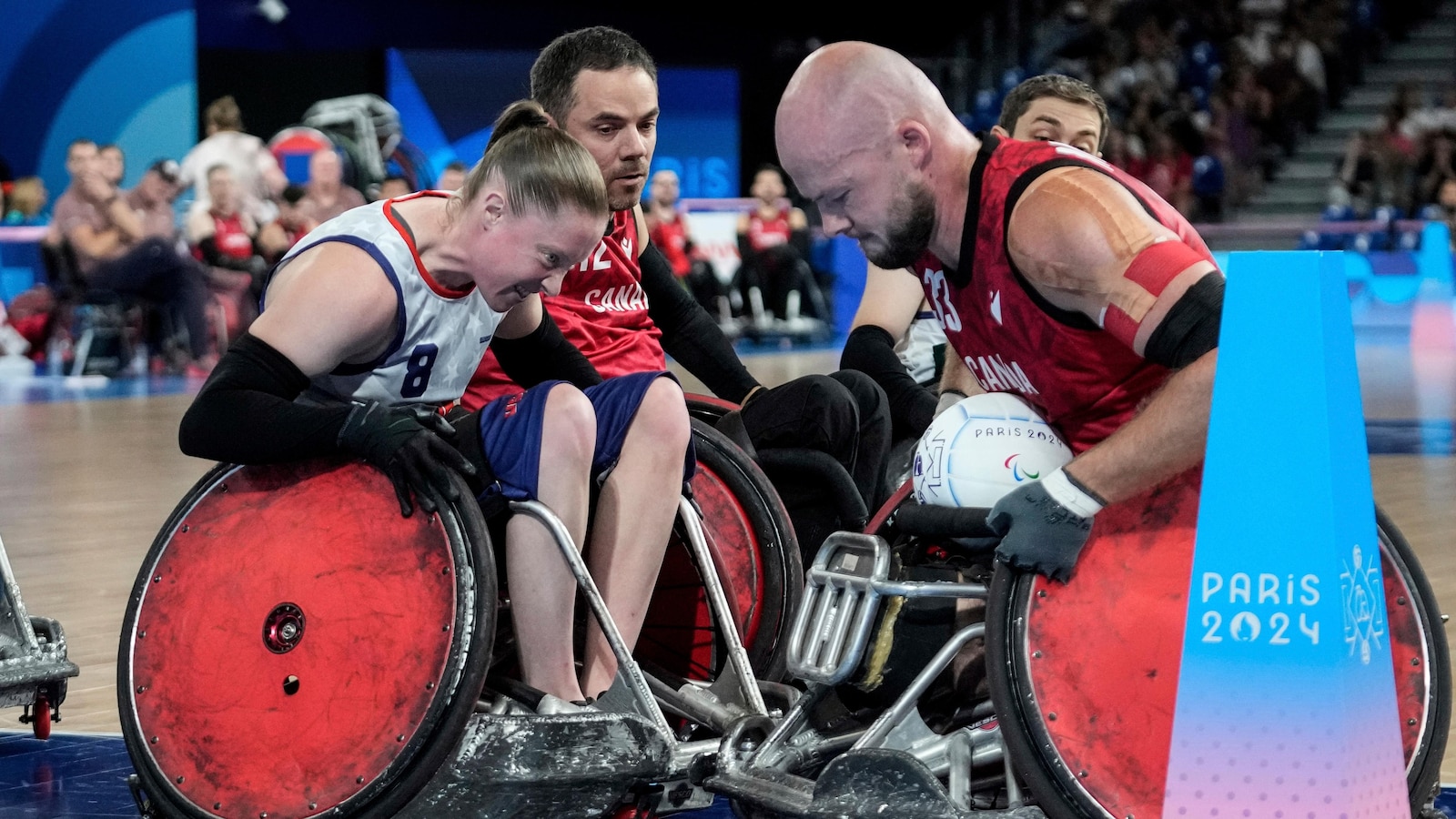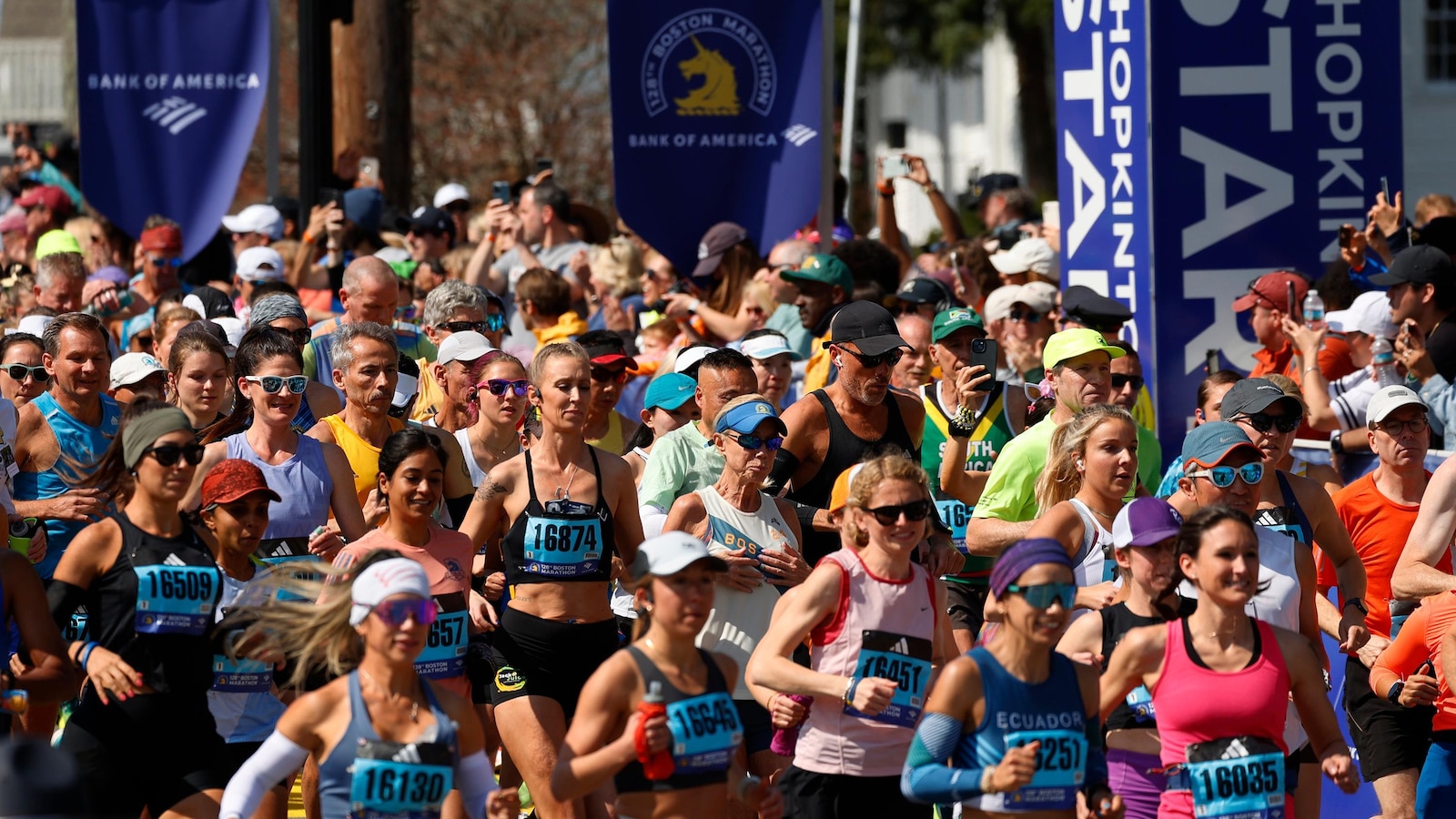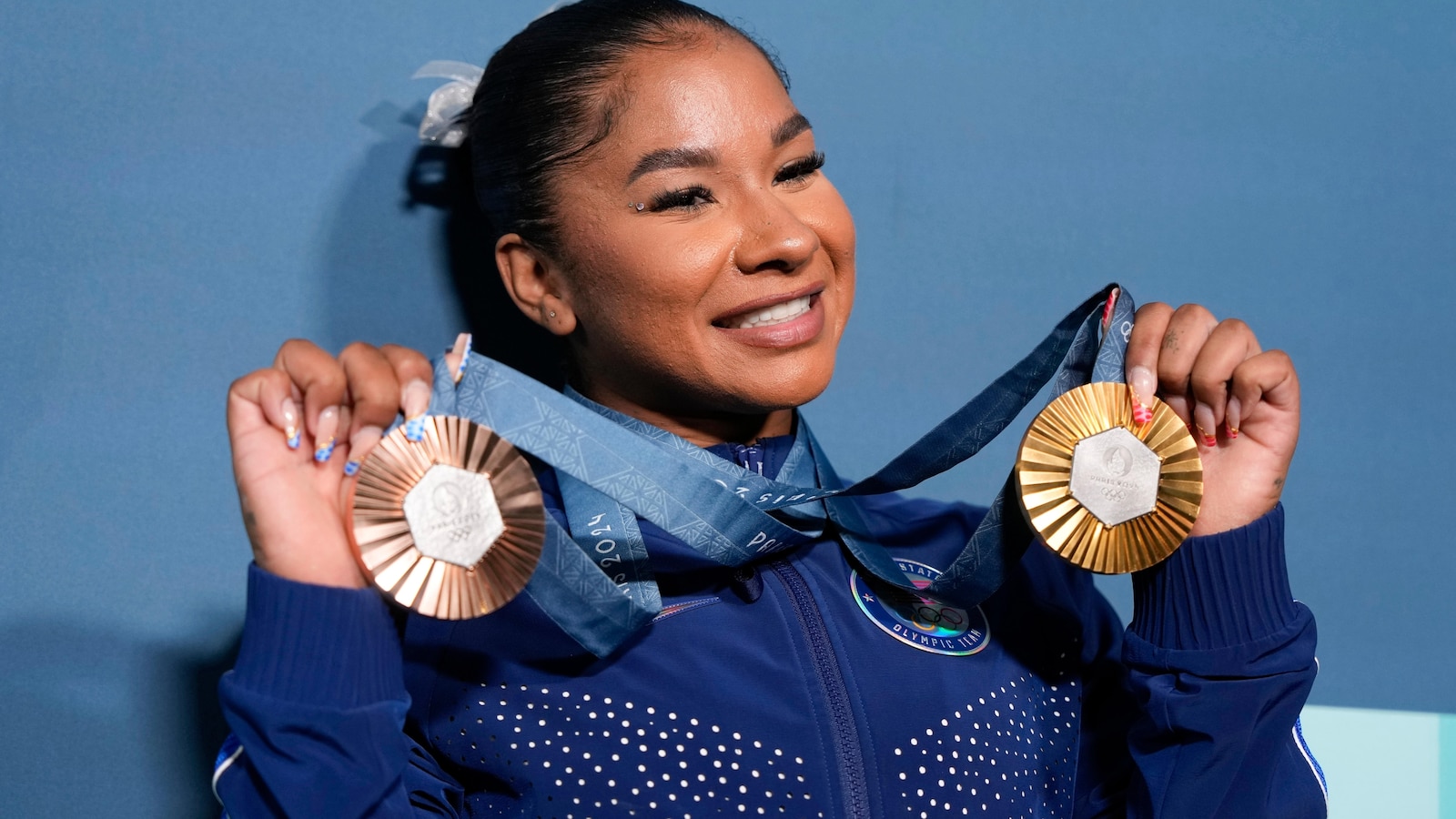
PARIS — When told by the stadium announcer that they were witnessing history, the Paris spectators roared and applauded. Not that the woman making history actually noticed: Sarah Adam was far too occupied — merrily slamming her wheelchair into other players, all of them men, and zipping across the court to score try after try.
Adam is blazing trails in France’s capital as the first American woman to compete in the most rough-and-tumble of the 22 sports at the Paralympics — wheelchair rugby.
She was in the starting lineup when Team USA kicked off its campaign on Thursday — against familiar foe Canada. Her six tries in 16 busy-as-a-bee minutes on court didn’t just contribute to a 51-48 victory in the group-stage game. Her belief and hope is that she’s also opening minds by showing that women can thrive in the mixed-gender but male-dominated sport.
“There’s a place for us on that court,” she said. “We need to have more females out there, and being seen, so that people know that this is an option for them.”
Other women in wheelchair rugby are barrier-busting, too. Australia has an unprecedented three women on its 12-player team in Paris. Denmark, Germany and Japan also have female players, leaving host nation France, defending champion Britain and Canada as the only teams that don’t.
The total of eight women is double the number that made wheelchair rugby teams at the Tokyo Paralympics in 2021. But the 88 men in Paris still outnumber the women 11-to-1, so there’s plenty of room and appetite for more progress.
“It’s going too slowly,” said Ella Sabljak, who scored one try in her 6 1/2 minutes on court in Australia’s opening game against Britain, which pulled away in the fourth quarter to win 58-55.
“We’re definitely paving the way in Australia,” she said. “Other teams definitely need to catch up, understand and recognize that women add value to the game. You know, we’re not burdens. We’re not different. We’re not difficult. We are, like, elite athletes amongst other elite athletes. And so I think people need to change their perspective on what women bring to the table.”
Adam was more upbeat.
“We’re getting more visibility,” she said. “The first step, that’s what matters.”
At the Paralympics, the sport classes athletes according to their physical abilities, with a score of 0.5 for the least able players, increasing by half-point increments to 3.5 for the most able. Together, the four players that teams field at any one time cannot have a combined total score above 8 — meaning that the most able players must team up with others less able.
But the sport rewards teams that field women — allowing them an extra half point for each woman they have on court. Against Canada, that rule allowed the U.S. team to start with Adam and Josh Wheeler, both classed at 2.5, and defender Jeff Butler, who added 0.5, but still leaving room for captain Chuck Aoki, classed at 3.0. He went on to become the team’s top scorer, contributing 21 tries.
“It levels the playing field,” Adam said of the rule.
Sabljak, the Australian, said: “It increases our chances of participating because it’s always been really male dominated.”
“It makes me feel like I am valued,” she added.
Andrea Bundon, who studies female participation in Paralympic sports, says wheelchair rugby is using the rule to encourage teams to look for and develop female players, who can then give them an extra edge on court.
“There is value in having the women and men compete together — they can appreciate each other’s athleticism and see that women are capable of competing at that level,” Bundon said in written comments to The Associated Press. She works at the University of British Columbia in Canada, specializing in the mechanics and anatomy of human movement.
“The position women occupy in this sport is still very precarious,” Bundon cautioned. But with Paralympic sports getting increasing attention, “the fact that these women are going to have the opportunity to showcase their athleticism and talent is good news and should be celebrated — even as we demand better!”
Exceptionally quick and nimble on two wheels, skills that she hones in hard training, Adam wove rings around burly Canadian men who chased her around the court, ramming their armored chairs into her’s when they could.
“They’re pretty big.” she said. “I’ve got to be smarter. I’ve got to be strategic and kind of outsmart them because I’m not able to to throw my weight into it that much. Me against a 200-pound guy, I’m going to lose.”
“I rely on the agility — the agility and the smarts.”
Spectator Marleen Sanderse, who participated in the Beijing Paralympics in 2008 as a backup rower for the Netherlands, was impressed.
“She’s amazing,” Sanderse said. “It’s so important to have role models, in sports, in politics, in everything.”
___
AP Summer Olympics: https://apnews.com/hub/2024-paris-olympic-games
Wheelchair rugby, also known as quad rugby, is a fast-paced and intense sport that has been gaining popularity in recent years. While traditionally dominated by male athletes, women are now making history in wheelchair rugby at the Paralympics.
One of the most notable female athletes in wheelchair rugby is Ann Cody. Cody, a Paralympic gold medalist and former president of the International Paralympic Committee, has been a trailblazer for women in the sport. She has been instrumental in advocating for gender equality in wheelchair rugby and has helped pave the way for other female athletes to compete at the highest level.
Another standout athlete is Kylie Grimes, a British wheelchair rugby player who has competed in multiple Paralympic Games. Grimes has been a key player for Team GB, helping them secure medals in various international competitions. Her skill and determination on the court have inspired a new generation of female wheelchair rugby players.
In recent years, more and more women have been breaking barriers and making their mark in wheelchair rugby. The sport requires strength, agility, and strategic thinking, qualities that many female athletes possess in abundance. As a result, women are proving that they can compete at the same level as their male counterparts and are pushing the boundaries of what is possible in wheelchair rugby.
The inclusion of women in wheelchair rugby at the Paralympics is a significant step forward for gender equality in sports. It not only provides female athletes with the opportunity to showcase their talents on a global stage but also helps to challenge stereotypes and break down barriers for women in sports.
As we look towards the future of wheelchair rugby, it is clear that women will continue to play a vital role in the sport. Their determination, skill, and passion for the game are helping to shape the future of wheelchair rugby and inspire others to follow in their footsteps. With more opportunities and support for female athletes, the sky is the limit for women making history in wheelchair rugby at the Paralympics.


